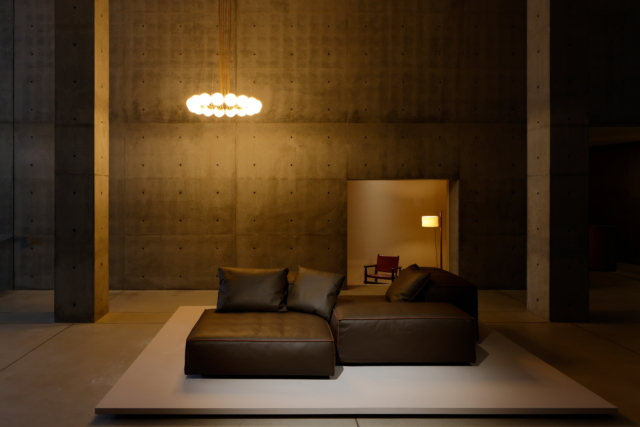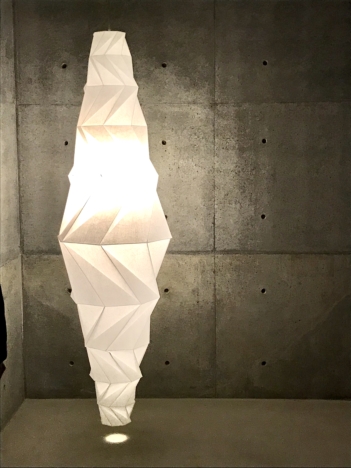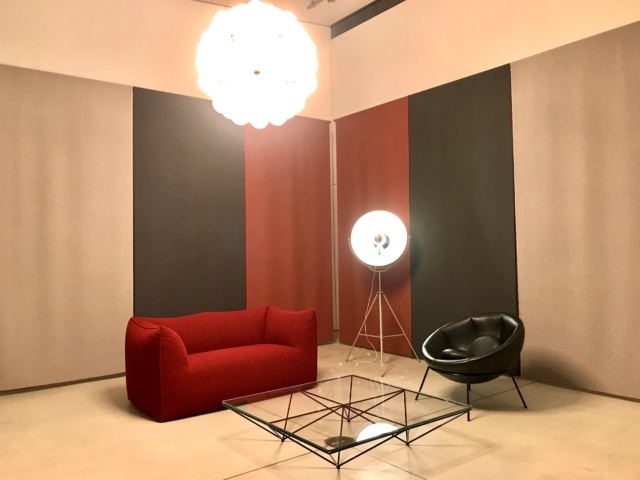“THE ORIGINAL” EXHIBITION
HAPPENINGText: Alma Reyes
In the lobby we see an interactive mapping diagram of the exhibition, which illustrates the interrelation of each exhibit with each other. The items are categorized by function, element, and usage. Design aspects, such as joinery, storage, interior fabric, and digital device connect to the core of furniture and tools. In this area, the first display evokes the essence of the home, which serves as the primary necessity of humans and is the closest entity to our personal being.

View of lobby with Extrasoft, 2008, Pietro Lissoni, Photo: Keizo Kioku
The bed, sofa, light, table and cabinet all answer our basic needs for comfort and utility. The Extrasoft (2008) is a soft and free-to-configure modular divan by Italian designer Pietro Lissoni that offers the owner flexibility in arranging the base, backrest and armrest elements according to his preferred combination; consequently, allowing free movement as well.

IN-EI ISSEY MIYAKE Minomushi, 2012, Issey Miyake + Reality Lab., Photo: Alma Reyes
Before entering the first room, we are greeted by Issey Miyake’s aesthetic IN-EI ISSEY MIYAKE Minomushi (2012) standing lamp. The non-woven fabric shade made of recycled plastic bottle fiber folds flat like origami, emblematic of Miyake’s clothing-making techniques. Shadow and form are emphasized through the soft, mellow light emitted from the lamp, and creates a beautiful hybrid of tradition and science.

Le Bambole, 2022 (Design: 1972), Mario Bellini / Bowl Chair, 2013 (Design 1951), Lina Bo Bardi /Alanda ’18, 1980 (Reproduction 2018), Paolo Piva / Fortuny Petite, 1920s (Design:1907), Mariano Fortuny y Madrazo / Taraxacum 88 S, 1988, Achille Castiglioni, Photo: Alma Reyes
Two spaces represent home design. The first room is stylized in black and red from Italy from early to mid-20th century. We see Le Bambole (2022; Design 1972) by one of Italy’s top designers Mario Bellini. The red sofa is characterized by its plump body, ridged edges, and soft comfort. Accompanying it is the Bowl Chair (2013; Design 1951) by Lina Bo Bardi. The semi-spherical seat is placed on a circular ring frame to allow users to change angles when seated. The Alanda ’18 (1980; Reproduction 2018) glass coffee table by Paolo Piva illustrates four upturned linked pyramid legs that emanate a strong visual impact. The standing lamp Fortuny Petite (1920s; Design:1907) by Mariano Fortuny y Madrazo appears as an industrial object with an umbrella-shaped diffuser, casting a soft and homogenous light. Above the living room set is a striking chandelier, the Taraxacum 88 S (1988) by renowned architect and furniture designer Achille Castiglioni. The light is composed of equilateral triangular aluminum modules and clear globe light bulbs, and resembles a dandelion fluff.
Read more ...




